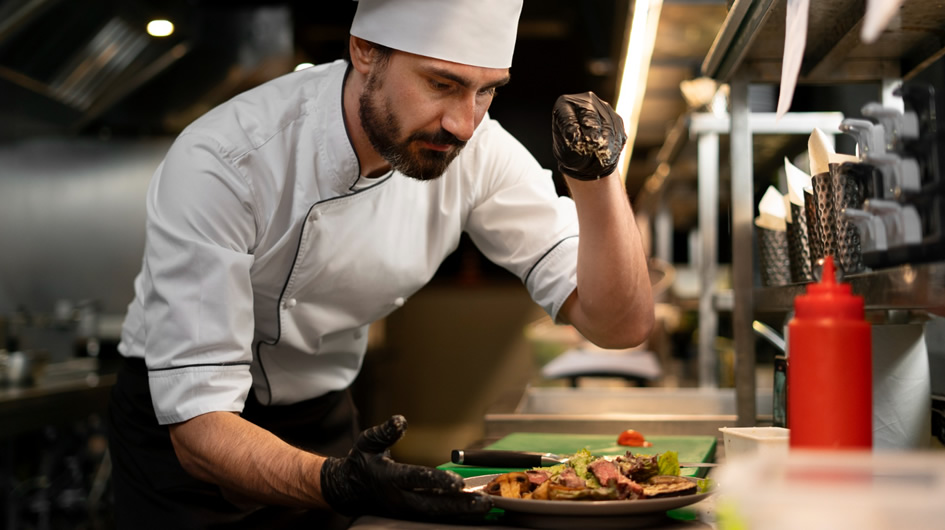

Why is Spain a powerhouse in gastronomic tourism?This is the question we are going to answer in this post.
But we want to go further and make a complete report on what gastronomic tourism means for Spain.
That is, we want to make you awarethe number of touristswho can enter Spain in search of its gastronomy.
And, of course,What do these tourists mean economically?.
We will review the number of Michelin restaurants and we will not forget to givea walk through the different Autonomous Communities.Each of them offers unique and exquisite dishes.
As you see, herein Double, we have decided to make a post that will make your mouth water.
Let's get started.

Spain receives every yearmillions and millions of touristsnot only interested in its beaches or its rich cultural heritage, but also attracted by its gastronomy.
What percentage are we talking about? Wellapproximately 12 percent of touristsInternational visitors say they come here for its culinary offering, according to statistics taken from theI HAVE
This percentage not only underlines the role of gastronomy in choosing Spain as a destination, but also highlightsa growing trend.
There is another very interesting fact that points towards the deseasonalisation of tourism, something that is repeated year after year.
It is true, as is the case withrural tourismGastronomic tourism does not depend so much on weather conditions and its “followers” travel to Spain at any time of the year.
And that, thetourist agentsThey also appreciate this. In other words, they appreciate not concentrating all the tourist offer in the high season.

Gastronomic tourismIt has an indisputable economic importance for Spain.
In terms of spending, tourists who travel to the country are attracted by gastronomyThey usually pay an average of 30 percent morein food-related experiences than the average tourist, as we have read inHosteltur.
These activities not only include visits to restaurants, but alsoexperiences in wineries, local markets and gastronomic events that promote the consumption of local products and support regional economies.
This type of tourismcontributes significantly to the Gross Domestic Product (GDP)of the country.
In 2022, it is estimated that gastronomic tourism generatedmore than 22.704 million euros, which reinforces the idea that gastronomy is not only a cultural attraction, but also a vital source of income for the national economy.
The continued investment in promoting gastronomy and the recognition of the quality of local products have further boostedThis category of tourism, increasing its weight in the sector andAttracting tourists with high purchasing power.

One of the ways in which a country is recognized for its gastronomic wealth is by the number of Michelin stars.
According to data fromthe guide itself, Spain countswith 272 restaurants, distributed as follows:
We are still far from countries likeFrance, the King of Michelin stars with 639 or Italy, with 395.
We are very close to Germany, which has 340, and ahead of England, with 206.
Among the most prominent chefs we findJoan Roca, Martín Berasategui and Dabiz Muñoz… and a long etcetera.
People who are taking Spanish cuisine to international recognition that was unthinkable just a few years ago.
The presence of so many prestigious restaurants and renowned chefs has helped to consolidateSpain as a must-see destinationfor lovers of high-end cuisine.

But we should not only focus on the great chefs. Spain is a country with a very rich culture and this is also reflected in its gastronomy.
Each autonomous community has its own repertoire of typical dishes, offering a unique dining experience for visitors.
From Galician octopus in Galicia, to paella in the Valencian Community, to pintxos in the Basque Country, regional gastronomyIt is a representation of the country's cultural wealth.
This aspect of Spanish gastronomy is highly valued by tourists, who appreciate the opportunity to explore local traditions and learn the history behind each dish.
The variety of typical dishes allows every corner of Spain to be a destination in itself, attracting both international tourists and national travelers interested in discovering authentic flavors.

This local gastronomy offering not only supports the regional economy, but also preserves and promotesthe cultural identity of each community.
What is clear is thatGastronomic tourism in Spain is much more than a trend; is a real powerhouse that attracts millions of visitors from all over the world.
From its economic impact to the international prestige of its chefs and restaurants, Spain has managed to position itself as one of the most important gastronomic destinations in the world.
Of course, gastronomic tourism must also take into account new technologies and, among them, haveThe best reservation systemsto attract and retain customers.